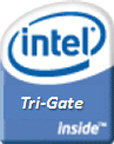Is Tri-Gate The New Intel-Inside?
By Tony Clark, 2-Dooz Inc. – February 27, 2013 (Original Publication Date)

 Earlier this week, Intel and Altera announced that the companies have entered into an agreement calling for Intel to manufacture Altera’s next generation FPGAs using Intel's 14 nm Tri-Gate transistor technology. The agreement provides additional proof that Intel is serious about its semiconductor foundry business. Moreover, the business strategy underlying the agreement is likely a blueprint for insuring that Intel remains “inside” for many years to come.
Earlier this week, Intel and Altera announced that the companies have entered into an agreement calling for Intel to manufacture Altera’s next generation FPGAs using Intel's 14 nm Tri-Gate transistor technology. The agreement provides additional proof that Intel is serious about its semiconductor foundry business. Moreover, the business strategy underlying the agreement is likely a blueprint for insuring that Intel remains “inside” for many years to come.
Intel’s Tri-Gate transistor is the first transistor to leverage three dimensions—enabling the transistor to be scaled into smaller and smaller footprints. A field-programmable gate array (FPGA) is a type of semiconductor chip which can be (hardware) configured by a customer after manufacturing.
Altera CEO John Daane summed up the benefits of the collaboration with Intel as follows: "Altera's FPGAs using Intel 14 nm technology will enable customers to design with the most advanced, highest-performing FPGAs in the industry ... In addition, Altera gains a tremendous competitive advantage at the high end in that we are the only major FPGA company with access to this technology."
In “Intel Puts ARM On Notice,” I argued that the Tri-Gate innovation and Intel’s chip manufacturing core competencies give Intel the ability to deliver lower power consuming chips without compromising performance—allowing the company to more effectively target smart phone, tablet, and other mobile applications. In the article I pointed to the growing availability of processors and system on chip designs from Intel built on top of Tri-Gate. The higher level of integration delivered through processors and system on chips designs built with Tri-Gate is consistent with the traditional chip-level view of the “Intel-Inside” program.
The use of Tri-Gate technology in its growing foundry business can be viewed as an expansion of the scope of the “Intel-Inside” program. In the broader perspective, the Tri-Gate technology is also a focal point. In a sense, “Intel-Inside” incorporates “Tri-Gate Inside” and, in doing so, gains a transistor-level view.
This potentially has broad implications for Intel and the entire semiconductor industry moving forward. I expect Tri-Gate to show up in all sorts of device level packages; many of which Intel the company would never pursue on its own. Therefore, the use of Tri-Gate in FPGAs is but one step towards a much more pervasive presence. Not only should this strategy ensure that Intel remains inside (and relevant) for years to come, but it should additionally ensure that the company's reach expands significantly beyond processors and system on a chip designs.
Those are my thoughts. And, as always, I invite and look forward to learning what you think.
